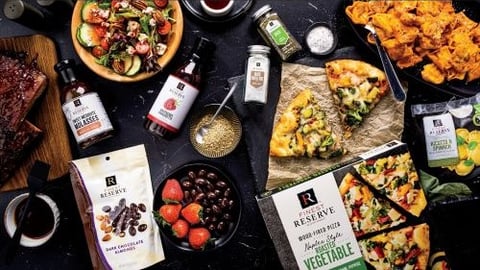How Grocers Can Better Promote Private Label
Retailers in recent years have invested time and money to develop and expand private label assortments across a host of categories. Accordingly, as inflation in recent years led many consumers to alter their shopping habits and turn to the money-saving options store-brand products offer, retailers have taken steps to raise the profile of their proprietary brands.
In 2023, The Kroger Co., Target Corp. and Whole Foods Market, among others, led the charge to raise the profile of their respective store brands. Following a playbook long used by national brand CPGs, retailers focused on the quality and value of their assortments, and often used themes such as happy families cooking at home to convey the vital role that their products play in the daily lives of consumers.
Will the trend continue? Will we see retailers expand their efforts to promote their store brands to consumers? Katie Kelly-Landberg, SVP of business and brand leadership at Minneapolis-based Favorite Child brand design, part of Periscope – a Quad company, shares her insights on the advertising efforts of retailers as it pertains to their own-brand products, and what we may see from retailers continuing this effort throughout 2024.
Store Brands: When we see retailers more aggressively advertising their private label products, are we seeing a change in mindset, or are they merely reacting to the needs of their shoppers?
Katie Kelly-Landberg: With the economy being shaky over the years since COVID and shoppers’ habits changing, private label has continued to grow and earn trust with consumers. As a result, businesses are definitely focused on bringing more consumers to their private label products. The other key is personalization. As a mom of teenagers, what am I interested in from [a retailer’s] private label assortment. What am I looking for in clothes, snacks and food? Social media is a huge support of that. It’s fascinating to watch the work retailers have done with influencers, or even getting their customers to be supporters of the brands.
SB: We expect to see more retail advertising focus on private label products. What would you recommend as the best tactics they should use to communicate with shoppers?
KKL: I think it falls in line with traditional marketing. It’s important to really figure out who the consumer is and how this product or brand is going to add value to their life. The next step is to figure out where to meet them in their day-to-day interaction with the brand. That could be retail media networks. It could also be pop-up ads that appear on their phone when consumers are searching groceries or recipes. It’s always important to keep in mind that [consumers] need to hear how products are going to add value to their lives.
SB: Is there any difference between how retailers should be promoting their brands on the shelves versus the brand that’s on the front of the store?
KKL: What we’ve witnessed over the years is how well retailers have defined their own brands and won over the trust of the consumer. So, for example, Cat & Jack from Target was one of my favorite brands when my kids were younger, because there was always an element of surprise. My kids liked Cat & Jack, and I loved the value and the durability of products in the line. And my husband would go to Target to get products from Goodfellow. When those own brands build quality and have a good reputation that they’re able to stand on their own and start talking about themselves as a living, breathing thing. And so you’ve seen in the marketplace, some retailers have done it amazingly well, and some are just beginning to get accomplished in their journey.
[RELATED: Target’s New Store Brand Focuses on Low-Priced Everyday Essentials]
SB: What are the biggest challenges for retailers as they promote their private label products?
KKL: It’s an interesting question, given the differences in retailers. ALDI’s assortment is 90% own brands, but when you look at Target or Walmart, they also have a broad selection of national brands, which help pay for some of their advertising. But when, as a retailer, you’re promoting your own brands, that money is coming from inside your pockets. It’s a fine line for retailers to walk. It’s also quite interesting when you look at Trader Joe’s and what they’re doing to promote their product, which are all store brands. Promoting not just the product, but the overall culture of the company, can build loyalty with consumers.
SB: What should retailers keep in mind as they look for new opportunities to promote their private label products?
KKL: It’s important to understand that the world of own brands is becoming much more sophisticated. We hear a lot of people say they trust own brands now and that they’re willing to try them. And I think own brands are so much smarter now. They’re really defining and finding that white space with their shoppers that not only are winning with those who are already loyal, but they’re building awareness for people who may shop the store down the street. They are offering products that are good for their shoppers, and they are also keeping a close eye on the trends as well.








